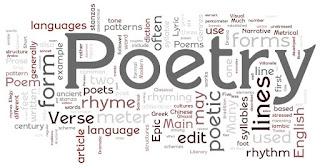What Textbooks Can’t Do
We all know about Christopher Columbus’ trip to America. We also most likely remember that “In 1492, Columbus sailed the ocean blue” from elementary school. Poems like this have been used for centuries to help us remember and document history. These poems not only cover facts like textbooks, but can convey emotions from that era. Long before this line was written in 1892, poetry has served as both a time capsule and a storyteller and still is. Below are a few examples of how poetry has recorded history through vivid language.
Paul Revere’s Ride
by Henry Wadsworth Longfellow (1861)
Listen, my children, and you shall hear
Of the midnight ride of Paul Revere,
On the eighteenth of April, in Seventy-Five;
Hardly a man is now alive
Who remembers that famous day and year?
He said to his friend, “If the British march
By land or sea from the town tonight,
Hang a lantern aloft in the belfry arch
Of the North Church tower as a signal light—
One if by land, and two if by sea;
And I on the opposite shore will be,
Ready to ride and spread the alarm
Through every Middlesex village and farm,
For the country folk to be up and to arm.”
Longfellow’s poem turns a real moment and a real man from the American Revolution into an immortalized legend. Since some parts are exaggerated, it helped shape the mythos of early American bravery and rebellion. No textbook could ever convey heroism in this way. This is a great example of how poetry can mold public memory.
First They Came
by Martin Niemöller (1946)
First they came for the Socialists, and I did not speak out— Because I was not a Socialist. Then they came for the Trade Unionists, and I did not speak out— Because I was not a Trade Unionist. Then they came for the Jews, and I did not speak out— Because I was not a Jew. Then they came for me—and there was no one left to speak for me.
This short, chilling piece was written by a German pastor that initially supported Hitler but later resisted. The poem reflects on his guilt and society’s silence during the Holocaust. He could have advocated for an end to Hitler’s tyranny but instead remained a bystander. Ultimately when Hitler came for him next, there was no one left to support him. This poem offers a unique perspective to a major historical event that affected millions. No history textbook could ever focus on man, and this is why poems are important. Piercing poems like these together with similar poems from different authors of that time allow historians to better understand different points of view.
The Destruction of Krakatoa
by Charles Warren Stoddard (1884)
Then sudden darkness swept the deep,
The thunder peal, the earthquake shock,
And fire that from the fuming steep
Leapt like a tempest-riven rock;
The sea turned red with flaming rain,
The sky grew black with ashes hurled,
The shrieking winds went down again—
And silence brooded o’er the world.
This poem captures the volcanic eruption of Krakatoa in Indonesia in 1883. This eruption was one of the most violent natural disasters ever observed. Stoddard’s vivid imagery allows readers to not only understand the force of the event but to feel it and experience it themselves. The poem almost casts the reader in Indonesia at that time so they could see first-hand the damage. Poems like this preserve how people felt and recount what happened in immense detail.
Each of these poems offers a different lens on history. Some focus on heroism, others on silence and sorrow, and some on nature’s power. They all have one common denominator though. All of them keep history alive. They don’t just keep historical facts alive, but also keep memories alive. The above are proof that poetry has always had a place in the recording of history, and they do it more vividly than any textbook ever could.
